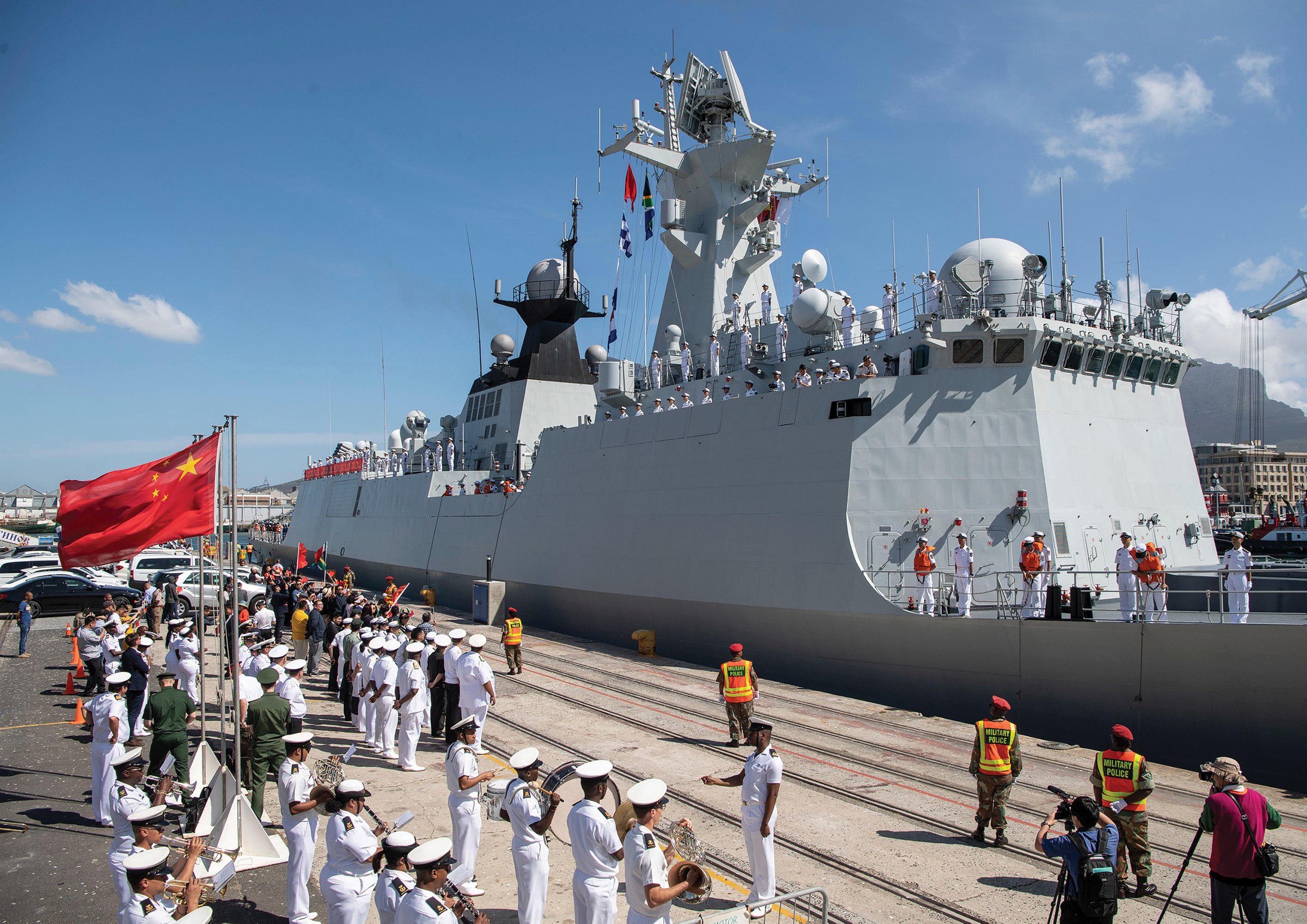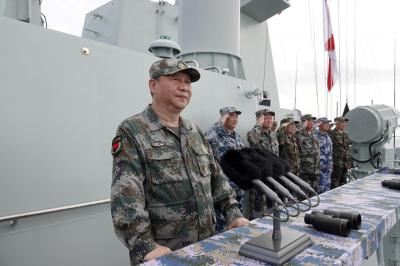China’s Expanding Naval Ambitions: Charting a Global Course with the World’s Largest Navy

China’s Expanding Naval Ambitions: Charting a Global Course with the World’s Largest Navy
In a significant geopolitical shift, China’s naval ambitions have taken a decisive turn towards the blue waters of the world’s oceans, far beyond its traditional green-water boundaries. With the world’s largest naval fleet, comprising over 340 warships, China has made substantial strides in recent years, transforming its maritime capabilities from primarily coastal defense to open-ocean dominance. This strategic evolution raises questions about China’s intentions and the global implications of its burgeoning naval prowess.
China’s naval transformation has been underscored by the launch of large guided-missile destroyers, formidable amphibious assault ships, and the commissioning of aircraft carriers capable of operating in the vast expanses of the open ocean. No longer confined to the protection of its coastal waters, China’s navy now has the capability to project power thousands of miles away from its capital, Beijing.

However, sustaining such a global reach necessitates more than just advanced vessels; it demands access to key naval facilities worldwide. Recent analysis by the Washington-based think tank, the Foundation for Defense of Democracies (FDD), reveals China’s strategic push for expanded port access, with far-reaching implications. This effort includes collaboration in the construction of a naval base in Cambodia and the exploration of potential military outposts as distant as Africa’s Atlantic coast.
China’s growing interest in Cambodia is particularly noteworthy. Beijing’s involvement in building a naval base in the Southeast Asian nation signals its intent to establish a strategic foothold in the region. This presence would not only extend China’s maritime influence but also provide a valuable logistics hub for the People’s Liberation Army Navy (PLAN) to refuel and replenish provisions far from home. Such a move raises concerns among neighboring countries, which fear that this could alter the regional balance of power and challenge their sovereignty.
The FDD report also sheds light on China’s presence in locations such as Argentina and Cuba, where PLA facilities serve multiple purposes, extending beyond traditional military applications. These facilities are equipped to monitor space activities, track satellites, and even eavesdrop on Western communications—a development that carries significant intelligence and security implications.

China’s push into the blue waters represents a departure from its historical maritime strategy, which was primarily focused on protecting its immediate maritime interests. The PLAN’s transformation into a global naval force is driven by a combination of economic imperatives and strategic considerations. China’s economy heavily depends on global trade, and securing vital sea lanes is paramount to safeguard its economic interests. Moreover, the projection of naval power aligns with China’s broader geopolitical ambitions.
The South China Sea, a region of strategic importance for its rich natural resources and critical maritime trade routes, has been at the center of regional tensions. China’s assertive territorial claims in the South China Sea have drawn international scrutiny and opposition. The expansion of its navy and the establishment of naval bases further afield can be seen as an attempt to diversify its maritime assets and reduce dependency on the South China Sea for strategic depth.
China’s involvement in Cambodia exemplifies its growing maritime influence. The construction of a naval base in Cambodia’s Koh Kong province, situated along the Gulf of Thailand, grants China strategic access to the South China Sea through an alternative route, circumventing potential regional disputes. This move aligns with China’s Belt and Road Initiative (BRI), a massive infrastructure and economic development plan spanning multiple continents. The naval base in Cambodia could serve as a BRI maritime gateway, facilitating the movement of goods and resources between the Indian Ocean and the South China Sea.
While the PLAN’s blue-water ambitions are a testament to China’s evolving military capabilities and global aspirations, they have prompted concerns among neighboring nations and the international community. The expansion of Chinese naval facilities in regions with contentious territorial disputes and fragile geopolitical landscapes raises questions about China’s long-term intentions.

In the case of Cambodia, its cooperation with China has raised concerns about sovereignty and regional stability. Neighboring countries worry that China’s growing presence could undermine their ability to protect their maritime interests and challenge the existing regional power dynamics. These concerns have led to calls for greater transparency and international scrutiny of China’s activities in the region.
China’s expanding naval reach has also raised alarm bells in the West. The United States, in particular, views China’s naval expansion as a challenge to its naval dominance and a potential threat to its allies in the Asia-Pacific region. The United States has responded with its own naval initiatives, including the Indo-Pacific strategy, aimed at maintaining a robust presence in the region and ensuring freedom of navigation.
In conclusion, China’s transition from a green-water navy to a blue-water force is a profound development in the global maritime landscape. While it reflects China’s economic and strategic interests, it also raises concerns about regional stability, sovereignty, and global security.
As China continues to expand its naval presence around the world, international cooperation and diplomatic efforts will play a crucial role in managing the implications of this transformation. The world watches with keen interest as China navigates the uncharted waters of its growing blue-water ambitions, aware of the far-reaching consequences they may bring.




